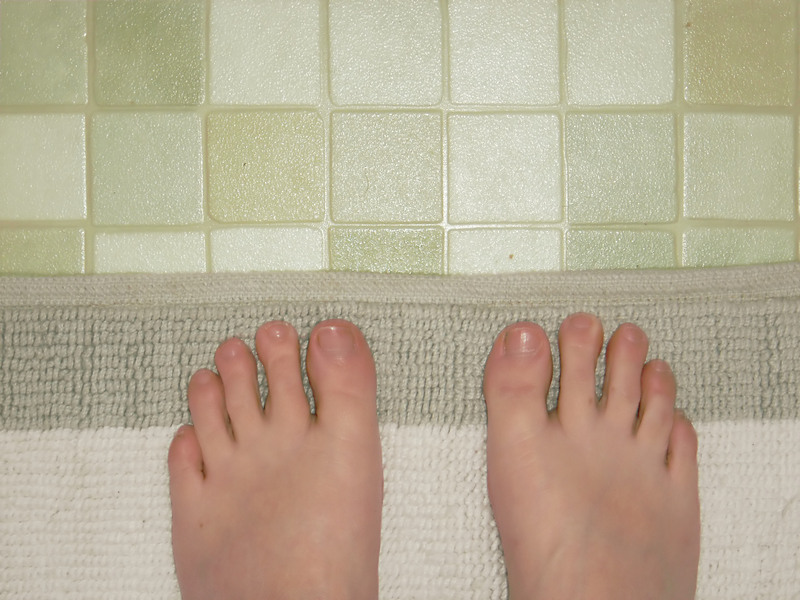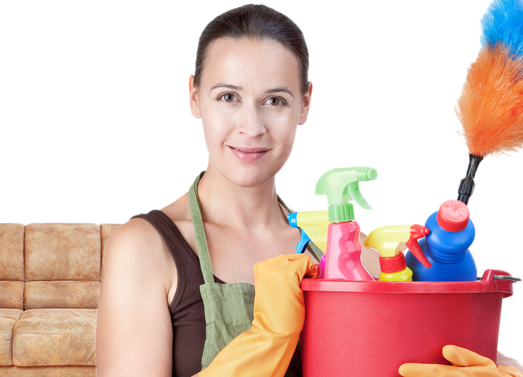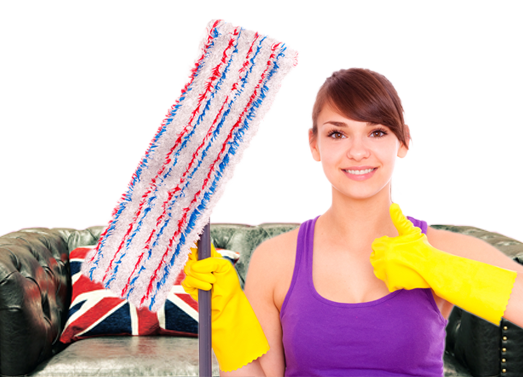Unleash Innovation to Conquer Cleaning Challenges
Posted on 24/09/2025
Unleash Innovation to Conquer Cleaning Challenges: Transforming Spaces for a Healthier Tomorrow
From the bustling corridors of hospitals to the dynamic offices of tomorrow, the science and strategy of cleaning is rapidly evolving. In today's world, to unleash innovation to conquer cleaning challenges is not just a goal--it's a necessity for hygiene, productivity, and peace of mind.
Why Innovative Cleaning is More Critical Than Ever
The need for advanced cleaning solutions has been dramatically underscored by global health events, tighter regulations, and the increasing complexity of modern environments. Traditional mopping, spraying, or dusting aren't enough to ensure safety, aesthetics, and employee or customer well-being. Thus, innovative cleaning strategies are becoming central to facility management, healthcare, education, hospitality, and residential settings.
- Heightened awareness of invisible pathogens.
- Demand for environmental sustainability in cleaning operations.
- Labor challenges and the rising cost of manual cleaning.
- Need for consistent, data-driven cleaning standards.
By leveraging technology, creative problem-solving, and novel materials, industries can overcome cleaning obstacles and set benchmarks for safety and efficiency.

The Pillars of Innovative Cleaning Solutions
1. Smart Cleaning Technologies
*Harnessing the latest tech is key to tackling modern cleaning challenges.* From autonomous floor scrubbers to AI-powered inspection tools, innovation is making cleaning smarter, not just easier.
- Robotics and automation: Robots can clean large facilities efficiently, navigating obstacles and targeting high-traffic areas.
- IoT-enabled tools: Internet of Things sensors monitor supply levels, air quality, and cleaning routines--creating actionable data for managers.
- UV-C disinfection: Ultraviolet light can quickly and safely decontaminate surfaces without residue or chemicals.
- Electrostatic sprayers: These deliver a fine, electrically charged mist that coats and disinfects even hard-to-reach areas.
Adopting these solutions helps organizations respond swiftly to hygiene threats, reduce errors, and ensure a healthier environment.
2. Green Cleaning: Sustainable Solutions for Lasting Results
Today's savvy facilities know that sustainability and innovation go hand in hand. Eco-friendly cleaning products and equipment are designed to minimize environmental impact without sacrificing efficacy.
- Biodegradable cleaning agents: Non-toxic formulas that break down naturally and are safe for both employees and the environment.
- Water-saving technologies: Advanced mop systems and vapor cleaners reduce water consumption without sacrificing cleanliness.
- Refillable and reusable containers: Cut waste by investing in bulk buying and reusable packaging solutions.
By rethinking product selection and cleaning methods, companies can conquer complex cleaning problems while aligning with green initiatives and regulatory standards.
3. Customized Cleaning Protocols: One Size Doesn't Fit All
No two facilities are alike. To truly innovate the cleaning process, it's essential to develop customized protocols matching the specific traffic, surfaces, and hygiene needs of each space.
- High-touch point targeting: Special attention on door handles, shared equipment, and communal areas ensures critical surfaces remain germ-free.
- Flexible scheduling: Data-driven tools can predict when and where cleaning is needed, optimizing labor and resources.
- Personalized product selection: Different materials (wood, tile, carpet, electronics) require unique cleansers and tools.
This approach guarantees that resources are not wasted--delivering the right level of clean, exactly where and when it's needed.
How to Foster a Culture of Cleaning Innovation
Empowering Your Cleaning Staff with Technology
One of the fastest ways to overcome cleaning obstacles is to invest in the people who do the work. Providing training on new technologies and sharing the 'why' behind new tools fosters empowerment, engagement, and pride.
- Offer skill development: Workshops or e-learning on robotics, eco-chemicals, and safety boost morale and retention.
- Embrace feedback loops: Include frontline staff in pilot programs for new tech and ask for insights before rollout.
- Celebrate successes: Recognize contributions and highlight measurable wins in cleanliness, efficiency, or sustainability.
Continuous Improvement Through Data and Analytics
Data is the cornerstone of modern cleaning innovation. Real-time dashboards can show exactly where and how to improve cleaning operations.
- Identify trends--like recurring areas that need extra attention.
- Monitor supplies and automate reordering for zero downtime.
- Track cleaning frequency and compliance with standards.
Smart analytics allow managers to support staff, optimize resources, and respond quickly to changing needs.
Collaborative Approach: Linking Departments and Partners
Encouraging open communication between cleaning teams, facility managers, procurement, and even end users leads to inspired problem-solving.
- Cross-functional meetings: Share pain points and brainstorm new solutions together.
- Vendor partnerships: Work with suppliers to stay ahead of the curve on next-gen products and systems.
- User feedback: Regularly survey residents, patients, staff, or customers for honest input on cleaning effectiveness--then innovate accordingly.
The Business Case: ROI of Cleaning Innovation
Reducing Costs, Boosting Efficiency
The initial investment in new cleaning solutions pays off rapidly by lowering long-term maintenance costs, reducing employee sick days, and preventing costly contamination incidents.
- Automation slashes labor hours for routine tasks, freeing staff up for higher-impact activities.
- Eco-products reduce liability related to chemical exposure and improve brand image.
- Predictive analytics reduce waste by ensuring supplies are used precisely where needed.
Delivering a Competitive Advantage
A track record of innovative cleaning practices attracts discerning clients and tenants, earning trust in highly competitive sectors.
- Cleaner, healthier spaces: Attract and retain customers, students, and employees.
- Boosted productivity: Reduce absenteeism and present a professional image.
- Compliance and peace of mind: Meet or exceed evolving health and safety standards.
Real-World Examples: Innovation in Action
Healthcare: Stopping Infections Before They Start
Hospitals and clinics use UV-C robots to sanitize patient rooms in minutes, slashing the risk of Hospital-Acquired Infections (HAIs). Meanwhile, IoT devices track where and when rooms have been cleaned, ensuring zero lapses in protocol. This approach has saved lives, reduced costs, and improved patient satisfaction--solid proof of innovation overcoming cleaning hurdles.
Commercial Buildings: Smart Scheduling for High-Traffic Spaces
Shopping malls and office complexes use sensors to monitor foot traffic and restrooms. When thresholds are reached, alerts are sent to cleaning staff, ensuring quick, targeted interventions without wasting resources. The result? Clean spaces, positive reviews, and lower operational costs.
Schools: Teaching Hygiene With Interactive Tech
Forward-thinking schools provide students with gamified cleaning checklists and visual alerts for handwashing. Investing in electrostatic sprayers allows staff to quickly disinfect shared surfaces, reducing absenteeism during cold and flu seasons.

The Future of Cleaning: What's Next?
As we look ahead, the pressure to innovate cleaning strategies will only increase. Emerging trends and technologies on the horizon include:
- AI-driven path planning: Machines will autonomously adapt their cleaning paths based on real-time facility activity.
- Augmented reality for training: On-the-job AR coaching will teach best practices and identify missed areas instantly.
- Self-cleaning surfaces: Antimicrobial coatings and nanotechnology will help prevent contamination between cleaning cycles.
- Enhanced air purification: Advanced filtration and air monitoring will become central to overall building hygiene.
By staying attuned to these developments and fostering a culture of continuous improvement, organizations can unleash innovation to conquer cleaning challenges for years to come.
Conclusion: Embrace Innovation, Overcome Every Cleaning Challenge
In the modern world, overcoming cleaning challenges isn't just about scrubbing harder--it's about thinking smarter. Whether you manage a healthcare facility, a corporate campus, or a hospitality venue, innovative cleaning solutions are your key to healthier, safer, and more inviting spaces.
From robotic assistants and eco-friendly products to data-driven protocols and a culture that celebrates new ideas, the pathway to conquering cleaning hurdles is clear. Organizations that lead with innovation will set new benchmarks for hygiene, operational success, and guest or employee experience.
Are you ready to unlock the full potential of your cleaning operations and set your facility apart? The opportunity is now--unleash innovation to conquer every cleaning challenge and embrace a brighter, cleaner future.
```




